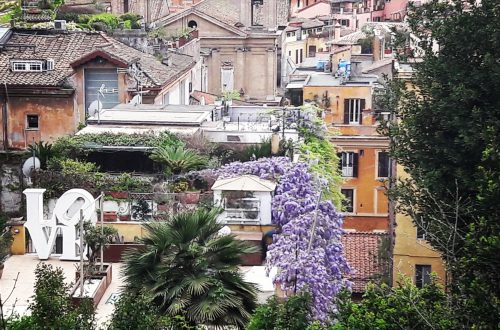She may appear to you as a mala mujer or a bruja (witch), and she will not be tamed. Andalusia will paint your fantasies hot, the color of those wretched blood-boiling impulses. Too hot to handle during the summer, the diva region of Southern Spain is smoking hot all year round.
ONE: RONDA
TWO: STRAIT OF GIBRALTAR
THREE: CADIZ
FOUR: GRANADA
FIVE: SEVILLA
SIX: CORDOBA
SEVEN: LOCAL TRADITIONS: corrida, Andalusian horses, flamenco


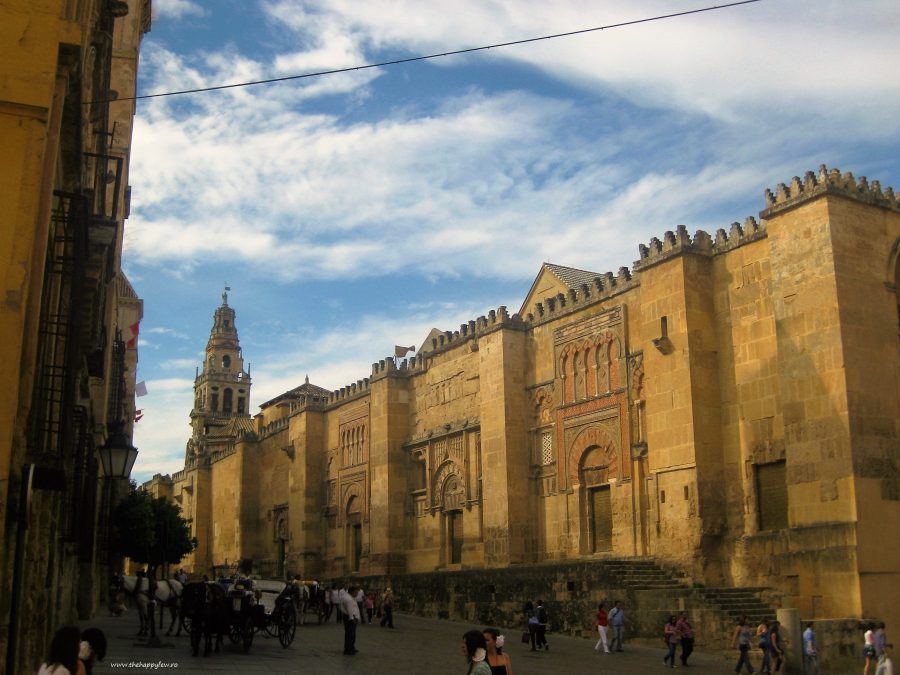
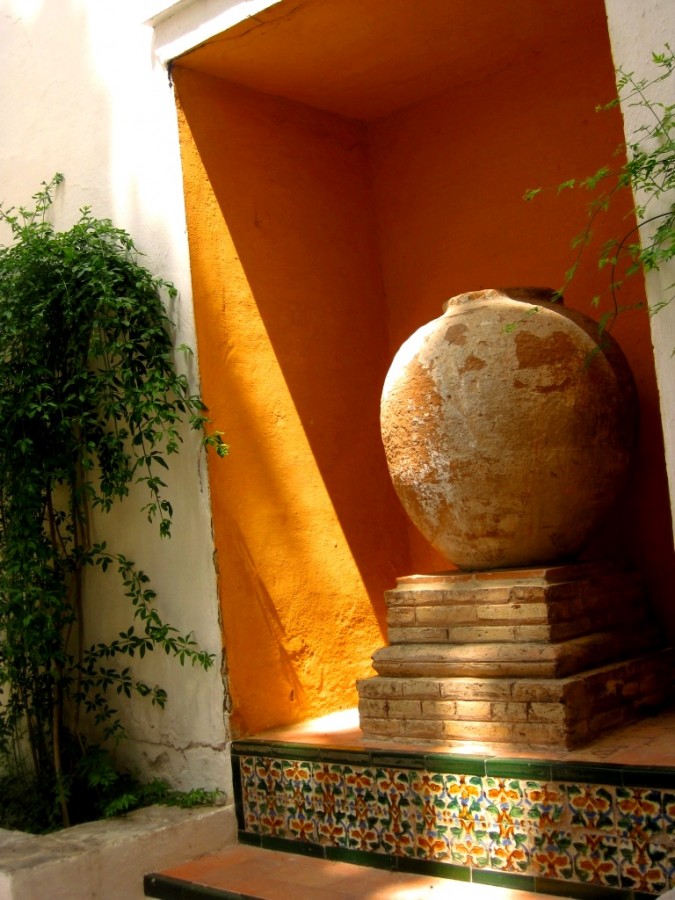
Andalucia is no place to go with a purpose or a timeframe. Don’t ever judge her: it is as intense as its flamenco rhythms and as savage as its corridas. It is also mute and dry at times, but at those times so are you. A world so simple and powerful with such a tremendous pull that is able to dismiss the rest of the universe with a single “Ole”.
I’ll tell you all about its beaches, and yachts and moors and alcazabas some other time – This little story is just a simple roadtrip for the sinful and the bold: flamenco, and horses, and bullfighting, a roadtrip thru the arid white lands at the heart of Andalucia.
Coming to the south of Spain usually means staying at a beach hotel or in a golf resort. The seaside – if you turn a blind eye on the overbuilt resorts- is all wonderful indeed, but underestimating the inland is crime. There is a splendid cleansing quality about the carreteras (highways) of Andalusia, which prepares you for the experience of the towns within. Distances are long. I experienced a strange transition while driving to Seville from the seaside: I started fully soaked in the typical feeling of tourist excitement, music loud, map next to me, one of the thousands of holiday cars at the Marbella exits; after sixty kilometers I was already bored, frantically looking around to find some interest on the road.
Cars were fewer and fewer, the asphalt was a perfect line cutting vastness into halves, the fields became white and perfectly uninterrupted, all landscape was a stranger to rain or tame. The road cleansed me of the world of taverns, motorboats and huge commercials. From time to time, on certain elevations of land, the figure of a black bull appeared – big iron bull-shaped indicators towards haciendas (ranches): this is the country of corrida bulls (toros bravos) growing.
Sevilla is a good town to see real flamenco; Jerez is even better, less touristy. Jerez de la Frontera is the hometown of the Sherry wine, it has a professional flamenco dance academy and a renowned equestrian school. Things are ageless here: in the evenings there is traditional music and dance at the little bars in town and you have to spend some time in the “Bodegas” to really get to know their wines. The Andalusian horses of Jerez are the best in dressage competitions and in doing the “passo doble” at corridas. Seville, on the other hand, is a town to stay, at least for a couple of days. In the old barrios you can still find sad, dark-eyed Spanish women dressed to dance to oblivion and torreros and banderilleros out for a drink at midnight, after the corrida.
Sevilla was the home of the legendary “Don Juan” and of Prosper Merimée – who was a worker in the town’s old tobacco factory and then created “Carmen”. Love is terrible in these places, the kind that you can die for; still, if you survive, a good philosophy teaches Andalusians to eventually take life easy and enjoy it fully.
And so they do. Every little town exhales peace of mind and peace of heart, with a tiny touch of catholic bliss, while every great town – and they have lots of magnificent ones – disarms you with its self sufficiency. In Cordoba, the same as in Granada, you get the same feeling that you are watching from outside, trying to remember in what movie you’d seen all this.
RONDA


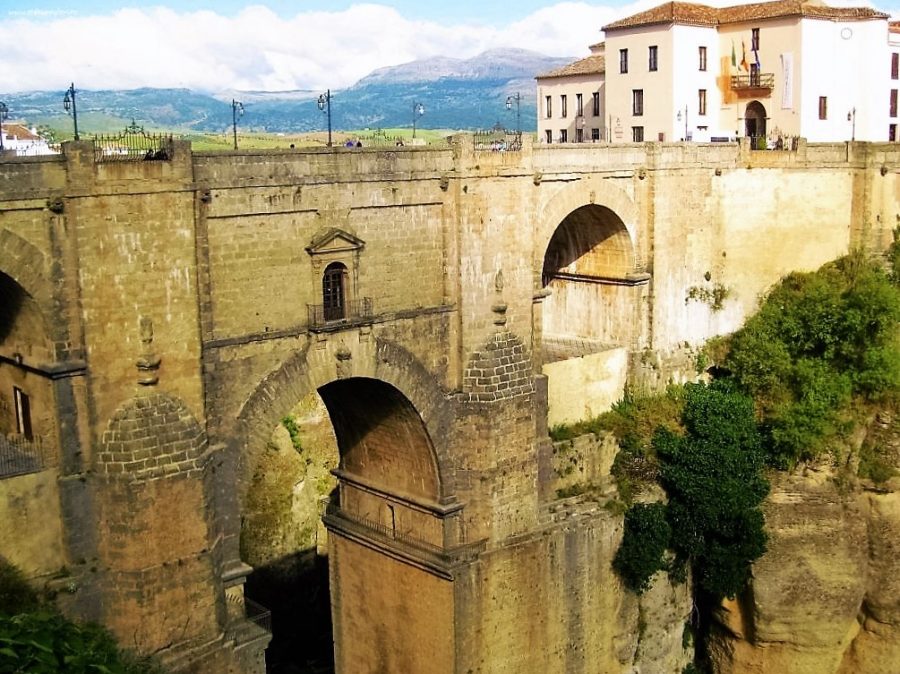
There is an unbreakable quality about that place: it’s perfect; not intimidating yet not popular either, not humble yet by no means brassy, audacious yet familiar. Ideally situated in the mountains only 40 minutes drive from the sea, the city is fractured in the middle by an abyss, the two halves united by an old bridge. Ronda hangs over the most magnificent abrupt rocks without being terrifying or cold, it has small paved streets with charming boutiques, a Museo de los Ladrones (The Thieves’ Museum) and the most beautiful Plaza de Torros (the bullfighting arena) in the world. The most spectacular corrida in the world takes place here, the Corrida Goyesca. It is the only bullfighting show still happening in Ronda, is inspired by Goya’s paintings and it takes place during the Pedro Romero Feria, every year at the begining of September.
The Corrida – there is a story behind the ‘barbarity
Bullfighting is now frowned upon and banished from three quarters of Spain, but ‘the barbarity’ conceals a lot of poetry and incredible craft. Suit of Lights is the name given to the clothing the Matadors and Banderilleros wear. The design has not changed since the mid 18th Century.
- The Montera is the hat worn by the Matador
- The Zapitillas are the flat soled leather slippers.
- The Capote or Capa means The large Cape.
- The Muleta the small red cape used in the final act.
- The Estoque the curved sword the Matador uses in the final act.
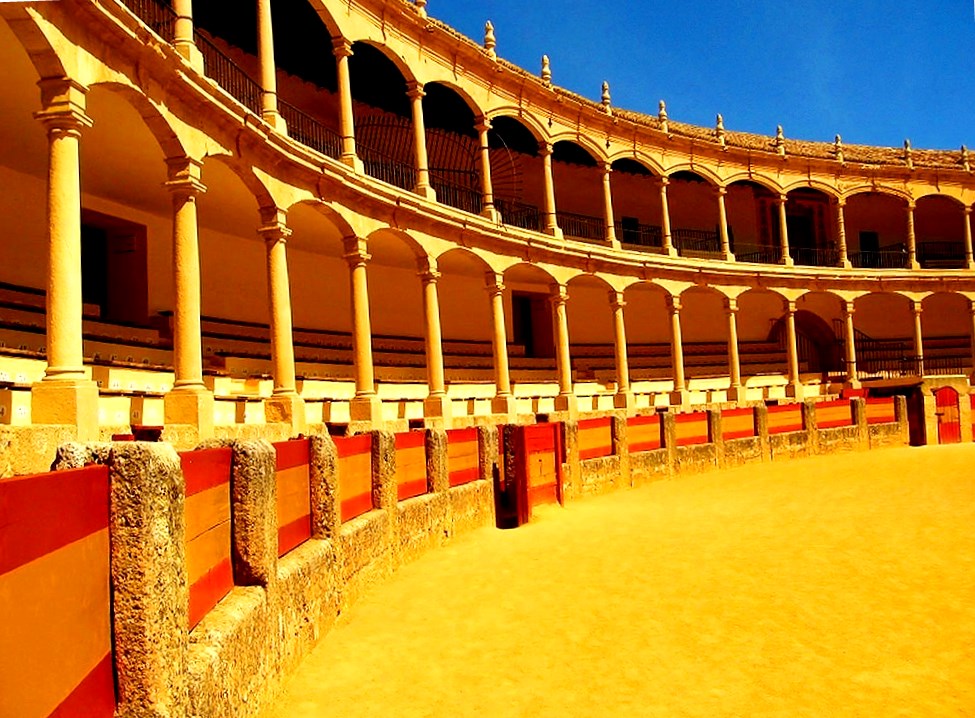

You will say, of course, that bullfighting is barbaric: the joy of seeing a cow get killed!? First, this is no ordinary cow; these are Toros Bravos, special bulls grown here and only here for centuries to fight at the corrida. You should go to the corrida and leave the animal rights issues rest for a night, I say. This is art indeed what they’re doing out there-they have hundreds of years of cultivated history and all noble families in the region are somehow involved in either bull farms or bull fighting- but the extraordinary and truly irresistible part is the vibration of the crowd in the arena. Corridas take place all year round but mostly during summer, in all the cities which have Plaza de Torros – and I’ve seen one even in small villages. You can check the bullfighting calendar here http://www.servitoro.com/en/bullfighting-calendar#month1. At a corrida – especially in smaller towns – only a small part of the audience is formed by tourists. The rest and the most active spectators are locals and the arenas are full. The locals will make you feel an outsider once more, someone looking through circumspect lenses at a world so self-centered that still relies so completely on its history and traditions. The energy in the arena awakes the primal instincts: the heart is jumping at the first ole! shouted in one voice by hundreds of people; eyebrows are frowning in disbelief at the sight of blood and then comes the awe when you witness the crowd’s enjoyment at the final stroke. Everything is taking place exactly as it did two hundred years ago: the bullfighters have the same rituals and the crowd responds the same; the same dialogue, the same respect for the faena – the art of maneuvering the bull – and above all, the same thrill, the same primal participation in the show. Since the time aristocracy was fighting on horseback and ladies were throwing their scarf at the chevalier for luck and protection, things remain unchanged. The torero takes the scarf, kisses it, wipes his forehead after the deadly blow and throws it back at the lady; she blushes and treasures it. The local audience is ferocious: the crowd is very much into the drama and often dictates the course of the corrida: they can dismiss a banderillero if he did not succeed a double, they ask for the killing coup when their patience is over, watch delighted how the bullfighter cuts the dead bull’s first ear and demand “otra”, the other one to be thrown in the public: everybody is anxious to get one.
You have to know that a corrida can also be a corrida flamenca, with no picadors and the bullfighter mounted on superb horses who dance while they chicane the bull. You also have to know that the moves of the bullfighter with his cape are his art; he can chicane a bull up to its exhaustion and he does it with no visible effort. You feel his faena in the reaction of the public. And you have to pay close attention at his decisive blow which has to be rapid, precise and masterly: the bull will remain on its feet and even move to and fro as if the blow had failed. This is the moment when the matador turns his back at it – and starts saluting the public. After a few moments the bull knees and then lies down. The bull does not die instantly. A banderillero comes and sticks a knife in its head. The whole arena shouts in satisfaction.
After a night like this, the rhythm of the passo doble pulses in your veins, passion takes over, you let your hair down and go dancing and you’ll have the torro bravo for dinner in one of the town’s restaurants – if you know where to search for them. Suddenly, your urban limits are challenged and basic instincts reveal what you’re really made of.
The tercios of the corrida
Act 1
1 At the President’s signal – a trumpet usually accompanied by drums – the bull enters the ring
2 The Matador’s assistants, the banderilleros – there are three of them or more – come into the ring from behind the special protection paravans (burladero) and start to chicane the bull.
3 The Matador enters the ring to get to test the bull himself. The artful series of moves and paces in this phase of the Matador’s first encounter with the bull is called the Veronica; he uses the large capa or cape.
Act 2
The President signals for the second act, the trumpeter sounds for the entrance of the Picadors
4 The Picador appears as a medieval knight, mounted on a beautiful horse; both man and horse are wearing metal for protection, because a lively bull usually attacks a horse without hesitation. The Picador uses a spear to weaken the neck of the bull, giving him two stings.
5 This is maybe the most breathtaking phase so far: the Banderilleros (there are 2 or three of them) come into the arena and use a pair of Banderillas (Barbed sticks) each to further weaken the bull. The Banderillas are small spears with curved end that, once they’re piercing the bull’s neck, remain stuck under his skin, fluttering small colored flags at the other end. In placing them the Banderillero must get as close as possible of the charging bull while his arms must be lifted high and straight to plant the banderillas over the bull’s horns.
Act 3
6 The final act is played out by the matador, with the muleta, the heart-shaped cape and the Estoque, the 33-inch sword. It is a masterly, complex dance-fight with the bull up to the bull’s maximum rage and exhaustion and is ended by one decisive blow with the estoque at a lethal spot at the base of the bull’s head.

